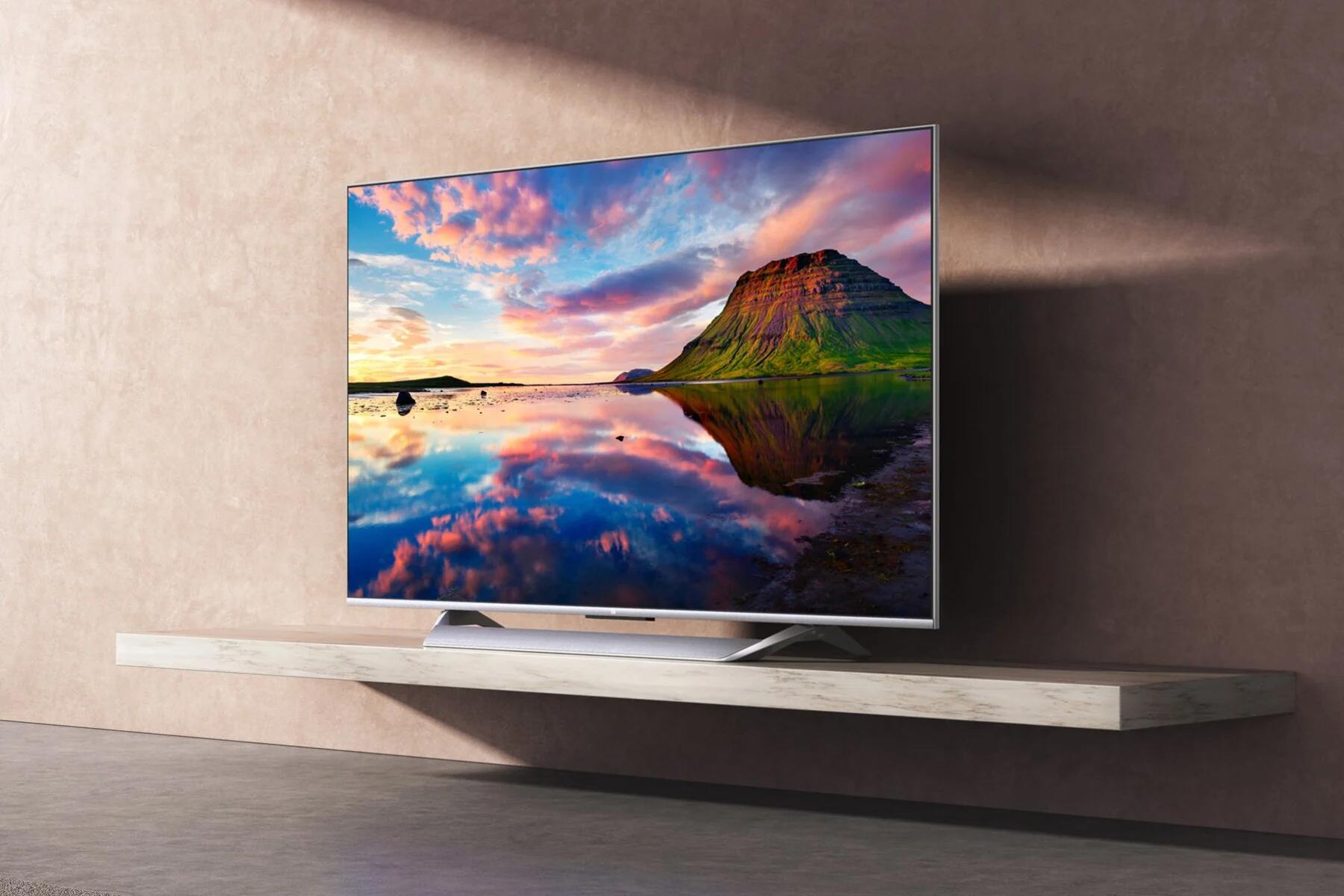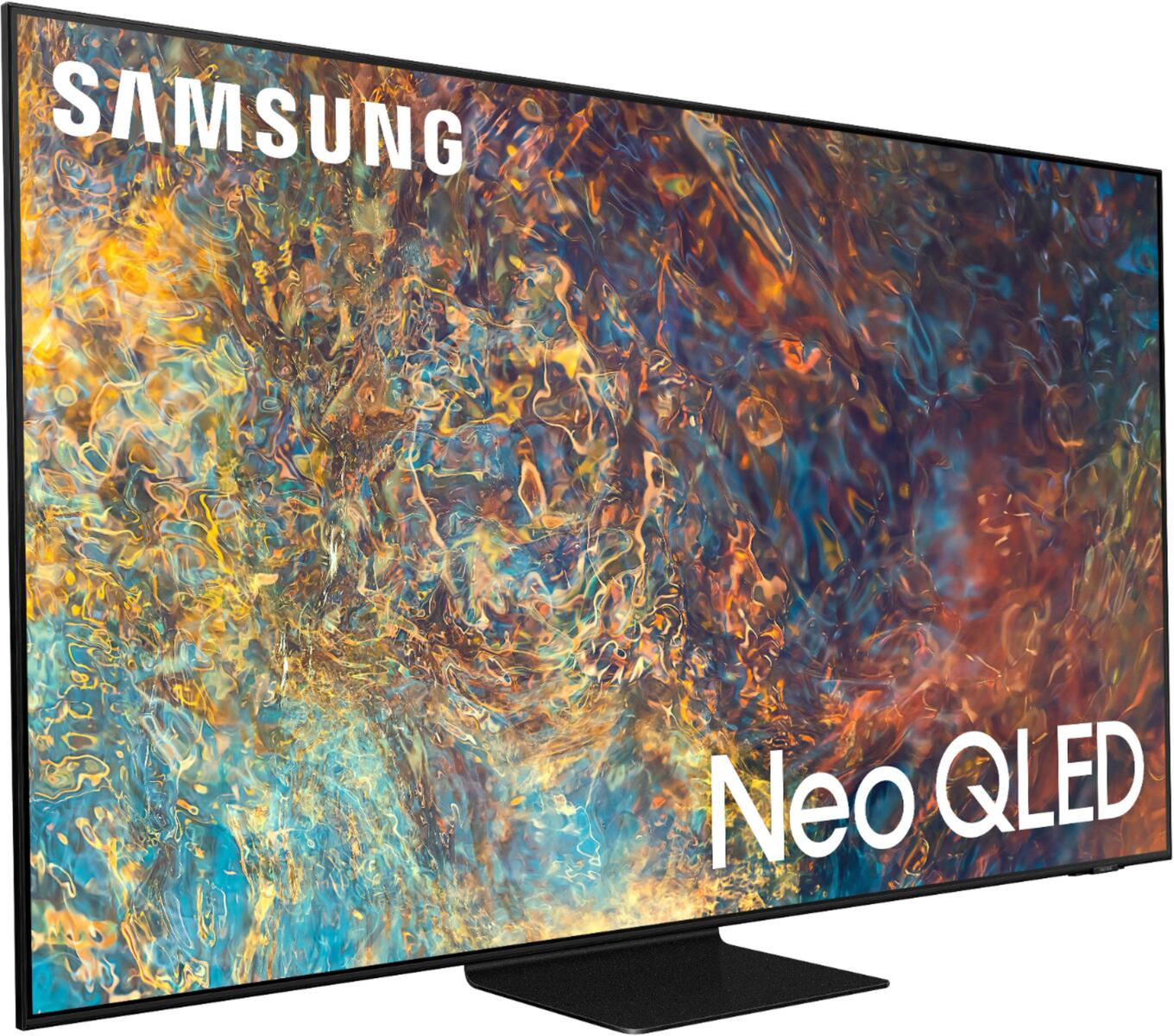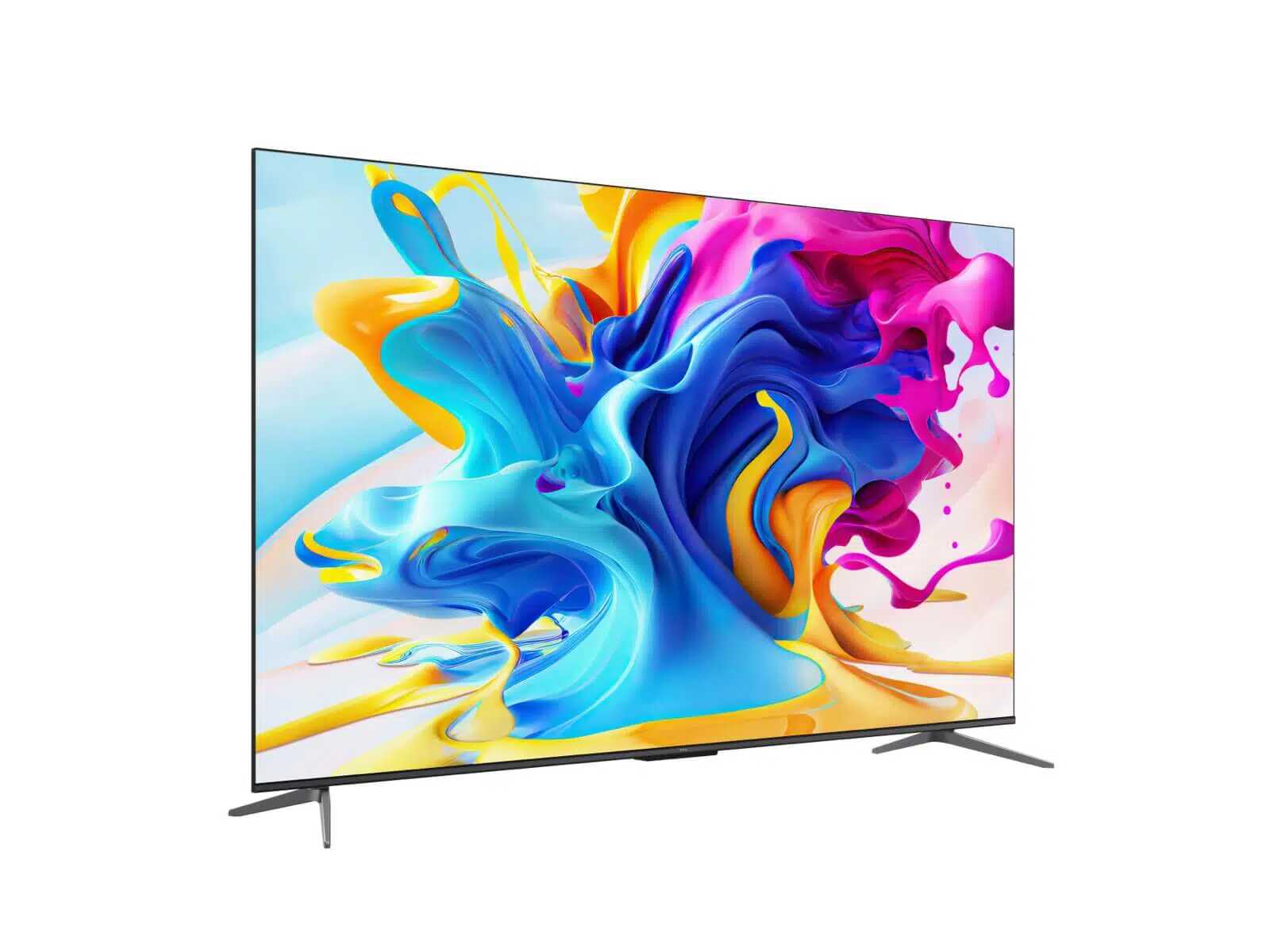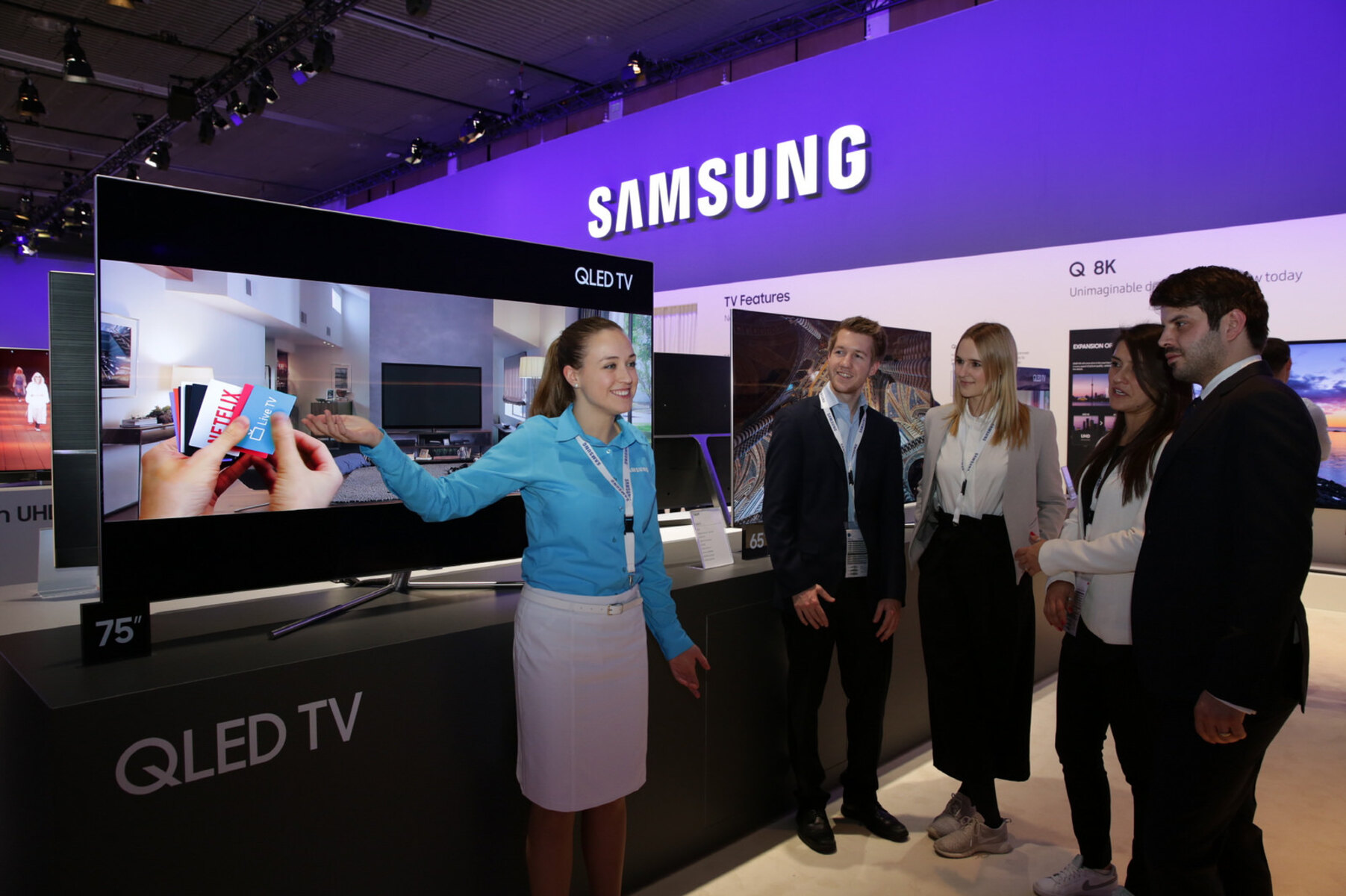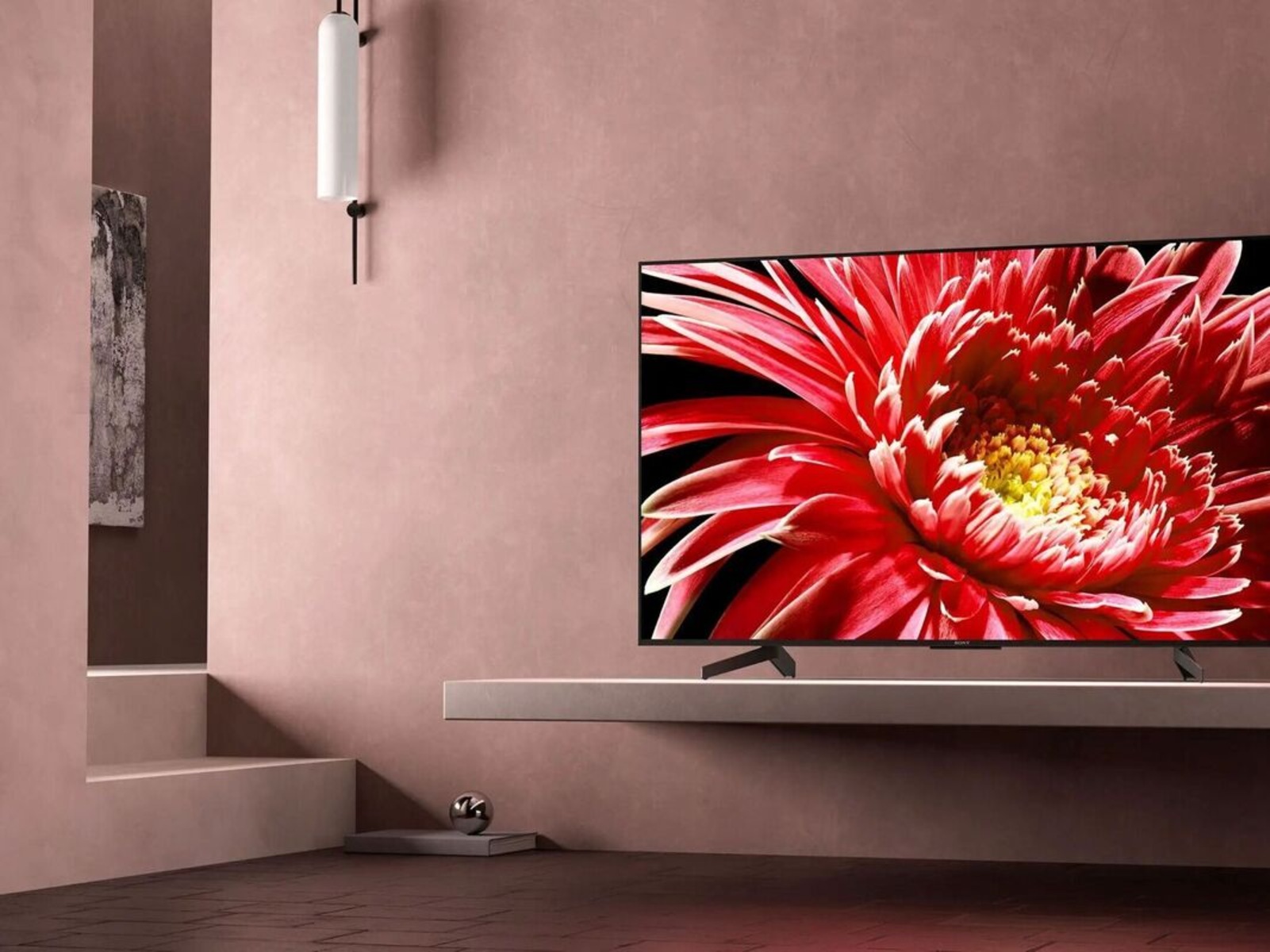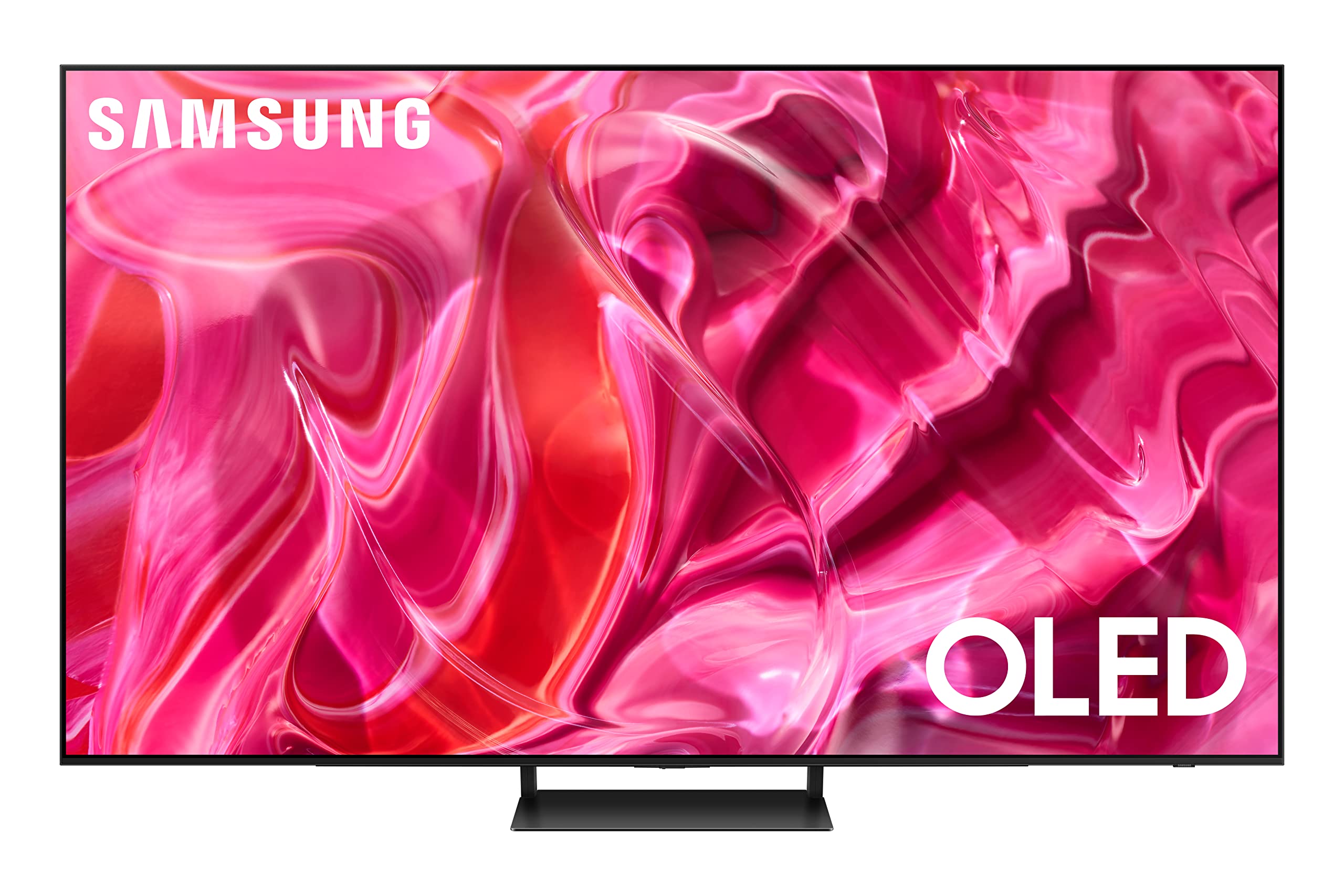Introduction
Welcome to the world of QLED TVs – a cutting-edge television technology that promises stunning visuals and immersive viewing experiences. However, you may have noticed that QLED TVs often come with a hefty price tag, leaving many wondering why they are so expensive. In this article, we will delve into the technology behind QLED TVs, explore their benefits, and uncover the factors contributing to their high cost.
QLED, which stands for Quantum Dot Light Emitting Diode, is a display technology that leverages microscopic particles called quantum dots to produce vibrant colors and exceptional picture quality. These TVs are known for their ability to deliver rich, accurate colors, high brightness levels, and enhanced viewing angles.
One of the key reasons why QLED TVs command a premium price is the advanced quantum dot technology they utilize. Unlike traditional LCD TVs, which rely on liquid crystals to produce colors, QLED TVs use tiny semiconductor particles that emit specific colors when illuminated by a backlight. This results in more precise and vibrant colors, bringing on-screen content to life.
Another notable feature of QLED TVs is their exceptional brightness and color accuracy. Thanks to their high peak brightness levels, these TVs can showcase bright and vivid images, even in well-lit rooms. Additionally, QLED panels are designed to reproduce colors with impressive accuracy, ensuring that every detail is faithfully represented on the screen.
Moreover, QLED TVs boast enhanced viewing angles, allowing you to enjoy an immersive visual experience from various seating positions in your living room. This is a significant advantage over other display technologies, such as OLED, which can experience color shifts and distortion when viewed from extreme angles.
Beyond the technology itself, QLED TVs come with additional benefits that make them worth considering. These benefits include lifelike picture quality, improved brightness and contrast levels, and increased durability and longevity.
Now that we have established the remarkable features and benefits of QLED TVs, let us dive deeper into why they come with a higher price tag than other television options. In the following sections, we will explore the factors driving up the cost of QLED TVs, shedding light on the reasons behind their substantial price.
The Technology Behind QLED TVs
QLED TVs are powered by innovative display technology that combines a range of features to deliver stunning visual performance. Let’s take a closer look at the key elements that make QLED TVs stand out from the competition:
1. Quantum Dot Technology: At the heart of QLED TVs lies quantum dot technology. Quantum dots are tiny nanocrystals, mere nanometers in size, that are capable of emitting precise colors when stimulated by light. By incorporating quantum dots into their panels, QLED TVs can produce a wider color gamut and more accurate colors, resulting in breathtakingly realistic images.
2. Brightness and Color Accuracy: QLED TVs boast impressive brightness levels, allowing them to deliver vibrant and punchy visuals even in brightly lit rooms. Paired with the excellent color accuracy facilitated by quantum dot technology, these TVs ensure a rich and lifelike viewing experience, where every shade and hue is meticulously displayed.
3. Enhanced Viewing Angles: QLED displays are designed to provide wider viewing angles compared to other screen technologies. This means that you can enjoy consistent picture quality and vibrant colors, regardless of where you’re sitting in the room. No more worries about color distortion or loss of brightness when watching from an angle.
4. Ambient Mode and Design: QLED TVs often come equipped with an ambient mode, allowing the TV to blend aesthetically with its surroundings when not in use. This feature enables the display to mimic the appearance of a painting or wallpaper, making it an attractive addition to your home decor. Furthermore, QLED TVs often boast sleek and slim designs, enhancing their visual appeal even when turned off.
By incorporating these advanced technologies, QLED TVs deliver an exceptional viewing experience, characterized by vibrant and true-to-life visuals, enhanced brightness and color accuracy, and improved viewing angles. These features make QLED TVs a top choice for those seeking immersive entertainment in their living rooms.
In the next section, we will explore the various benefits that QLED TVs offer to further understand why they are highly sought after by consumers.
#1: Quantum Dot Technology
One of the fundamental components of QLED TVs is quantum dot technology. Quantum dots are microscopic semiconductor particles that possess unique optical properties. When these particles are illuminated by a backlight, they emit light at precise wavelengths, resulting in vibrant and accurate colors.
The process begins with a blue LED backlight, which passes through a layer of quantum dots. Each dot acts as a filter and absorbs the blue light, re-emitting it as a pure and narrow range of specific colors. By combining different sizes and materials of quantum dots, a wide gamut of colors can be achieved, surpassing the color capabilities of traditional LCD panels.
Quantum dot technology offers several advantages over other display technologies. Firstly, it enables QLED TVs to reproduce colors with a higher level of accuracy. The colors displayed on the screen closely match the original content, making the viewing experience more lifelike and immersive. From vibrant reds and blues to subtle shades and gradients, quantum dot technology ensures that every hue is faithfully represented.
Furthermore, quantum dots have a unique property known as high color purity. This means that they can produce vibrant colors while maintaining high levels of brightness. Unlike other display technologies that may compromise brightness to achieve accurate colors, QLED TVs can deliver both vibrant hues and impressive brightness, resulting in stunning visuals.
Another notable advantage of quantum dot technology is its improved energy efficiency. Quantum dot materials are known for their ability to convert light energy with high efficiency. This means that they require less power to produce the same level of brightness as other display technologies, resulting in energy savings and a reduced environmental impact.
Lastly, quantum dot technology contributes to the longevity of QLED TVs. Unlike organic materials used in OLED displays that may degrade over time, quantum dots have excellent durability. This ensures that the colors remain vibrant and accurate for a longer period, allowing users to enjoy a consistent viewing experience over the lifespan of the TV.
In summary, quantum dot technology is at the core of QLED TVs, offering exceptional color accuracy, high color purity, energy efficiency, and durability. This advanced technology plays a pivotal role in creating vivid and lifelike images, allowing viewers to immerse themselves in a visual extravaganza.
#2: Brightness and Color Accuracy
When it comes to visual performance, QLED TVs excel in both brightness and color accuracy. These two factors play a crucial role in creating a captivating and immersive viewing experience.
Firstly, QLED TVs are renowned for their exceptional brightness capabilities. With high peak brightness levels, these TVs can produce bright and dazzling images that pop off the screen. This is particularly important in rooms with a lot of ambient light, as the brightness allows the on-screen content to remain vibrant and visible, even in well-lit environments. Whether you’re watching a brightly lit outdoor scene or a dynamic action sequence, QLED TVs ensure that every detail remains clear and crisp.
Moreover, the brightness of QLED TVs enhances the overall dynamic range of the image. This means that the brightest areas and the darkest areas of a scene can be accurately reproduced, creating a contrast that adds depth and realism to the visuals. This improved contrast enables viewers to experience more detailed shadow areas and dazzling highlights, further immersing them in the on-screen action.
In addition to brightness, QLED TVs are also known for their exceptional color accuracy. Thanks to the advanced quantum dot technology, these TVs can produce highly accurate and true-to-life colors. Whether it’s the rich hues of a sunset, the vibrant tones of a garden, or the subtle shades of a portrait, QLED TVs ensure that every color is precisely reproduced, capturing the essence of the original content.
Color accuracy is crucial in delivering a realistic and immersive viewing experience. It allows viewers to see the intended colors as intended by the content creator, making the visuals more engaging and captivating. Whether you’re watching movies, sports, or playing video games, the accurate color representation of QLED TVs adds a level of authenticity and depth to the content.
Furthermore, QLED TVs often come with advanced color management systems that allow users to fine-tune the color settings according to their personal preferences. This flexibility ensures that viewers can customize the color reproduction to suit their individual tastes and optimize the visual experience for different types of content.
In summary, QLED TVs excel in both brightness and color accuracy, offering a visually captivating experience. The high peak brightness levels of QLED panels ensure that images remain vibrant and visible, even in well-lit environments. Additionally, the accurate color reproduction provided by quantum dot technology allows viewers to enjoy lifelike and immersive visuals, bringing content to life in a truly captivating way.
#3: Enhanced Viewing Angles
One of the standout features of QLED TVs is their ability to provide enhanced viewing angles. Unlike other display technologies, such as OLED, which may experience color shifts and loss of brightness when viewed from off-center positions, QLED TVs offer a wider and more consistent range of viewing angles.
Traditionally, LCD panels have a limited viewing angle, meaning that the colors and contrast of the image may vary significantly depending on your seating position. However, QLED technology has addressed this issue by implementing advanced panel designs and innovative backlighting techniques.
With enhanced viewing angles, QLED TVs provide a more inclusive and enjoyable viewing experience for everyone in the room. Whether you’re sitting directly in front of the TV or off to the side, you can still appreciate the same level of picture quality and color accuracy, without any noticeable degradation.
Expanded viewing angles are particularly beneficial for large gatherings or when watching TV with friends and family. Regardless of where people are seated in the room, everyone can enjoy a clear and vibrant picture, creating a more immersive and engaging atmosphere.
Moreover, the enhanced viewing angles of QLED TVs also contribute to the overall versatility of the display. You have the flexibility to position your TV in various locations within your living space without compromising the visual quality. Whether you mount your TV on a wall, place it on a stand, or even tilt it for comfortable viewing, you can be confident that the image quality will remain consistent from different angles.
QLED TVs achieve their impressive viewing angles by employing technologies such as advanced panel alignment, improved backlight uniformity, and optimized pixel arrangements. These innovations work together to minimize color shifts and ensure that the image maintains its vibrancy and accuracy, regardless of your viewing position.
It’s worth mentioning that while QLED TVs offer superior viewing angles, the optimal viewing experience is still achieved when you are seated directly in front of the screen. This is where you will experience the true brilliance of the colors and the full impact of the picture quality that QLED technology delivers.
In summary, QLED TVs’ enhanced viewing angles set them apart from other display technologies. With a wider range of viewing positions, these TVs ensure that everyone in the room can enjoy a consistent and immersive viewing experience. Whether you’re seated in the center or on the side, the vibrant colors and accurate picture quality of QLED TVs remain constant, making them a popular choice for those seeking versatility and inclusivity in their entertainment setup.
#4: Ambient Mode and Design
QLED TVs not only deliver exceptional visual performance but also offer innovative features and sleek designs that enhance the overall viewing experience. Two notable aspects that set QLED TVs apart in terms of aesthetics and functionality are the Ambient Mode and their sleek and modern designs.
Ambient Mode is a unique feature found in many QLED TVs that allows the screen to blend seamlessly with its surroundings when not in use. Instead of a blank, black screen, Ambient Mode displays various visual content, such as artwork, photos, or even weather updates. It essentially transforms the TV into an integral part of your home decor, making it a visually pleasing addition to your living space.
With Ambient Mode, you can choose from a range of pre-loaded images or even upload your own photos to personalize the display. This feature not only adds a touch of elegance to your room but also serves a practical purpose by eliminating the need for a separate digital photo frame or artwork on the wall.
Additionally, QLED TVs often feature sleek and modern designs that complement any home environment. The slim profiles and thin bezels of QLED TVs create a clean and minimalist look, allowing them to seamlessly integrate into any room decor. Whether you mount the TV on a wall or place it on a stand, QLED TVs add a touch of elegance and sophistication to your living space.
Furthermore, the design of QLED TVs extends beyond aesthetics. Many models offer cable management systems that help conceal unsightly cables, keeping your TV area neat and organized. This not only enhances the overall appearance but also reduces clutter and simplifies the installation process.
Moreover, the physical design of QLED TVs is often built with user convenience in mind. These TVs typically come with user-friendly interfaces, intuitive remote controls, and easy access to settings and features. The goal is to provide a seamless and hassle-free user experience, making it effortless to navigate through menus, switch between inputs, and adjust settings.
Overall, the combination of innovative features like Ambient Mode and sleek designs makes QLED TVs not just a high-performing display but also an attractive piece of furniture that enhances your living space. Whether the TV is turned on or off, it adds a touch of style and sophistication to your home, making it a focal point of your entertainment setup.
In the following section, we will delve into the benefits of QLED TVs, highlighting the compelling reasons why these televisions are worth considering despite their higher price range.
Benefits of QLED TVs
QLED TVs offer a range of benefits that make them an appealing choice for those seeking exceptional visual quality and an immersive viewing experience. Let’s explore some of the key advantages of owning a QLED TV:
1. Lifelike Picture Quality: QLED TVs excel in producing lifelike and vibrant images. With their advanced quantum dot technology and color accuracy, these TVs are capable of delivering an extensive color gamut, ensuring that every hue and shade is faithfully reproduced. Whether you’re watching movies, sports, or playing games, QLED TVs bring your content to life, immersing you in a visually stunning experience.
2. Improved Brightness and Contrast: QLED TVs offer exceptional brightness levels, allowing for dazzling and dynamic visuals. This is particularly beneficial in well-lit rooms or when watching HDR content, as the brighter highlights and finer details are more pronounced. Along with the high brightness, QLED TVs also exhibit excellent contrast capabilities, providing deeper blacks and brighter whites for enhanced depth and realism in on-screen content.
3. Increased Durability and Longevity: QLED TVs are designed to offer superior durability and longevity. With the use of quantum dot technology, these TVs have better resistance to image retention or “burn-in” issues commonly associated with other display technologies. This means that QLED TVs are less prone to permanent screen damage, ensuring a longer lifespan and a consistent viewing experience over time.
4. Enhanced Viewing Angles: As mentioned earlier, QLED TVs boast enhanced viewing angles, allowing for a wide and consistent viewing experience from various positions in the room. Whether you’re sitting directly in front of the TV or to the side, you can enjoy accurate colors and excellent picture quality without any noticeable degradation.
5. Smart TV Features: Most QLED TVs come equipped with smart TV capabilities, offering access to apps, streaming services, and a multitude of content options. With built-in Wi-Fi and connectivity features, you can effortlessly connect to the internet and enjoy a wide range of entertainment options right from your TV. Additionally, voice control and smart home integration further enhance the convenience of using a QLED TV in today’s interconnected world.
6. Gaming Performance: QLED TVs are also well-equipped for gaming enthusiasts. With fast response times, low input lag, and high refresh rates, these TVs offer a smooth and responsive gaming experience. When paired with HDR support and the ability to deliver vibrant colors and stunning visuals, QLED TVs elevate the gaming experience to new heights.
These are just a few of the benefits that QLED TVs bring to the table. From lifelike picture quality and improved brightness to increased durability and enhanced viewing angles, these televisions offer a comprehensive package that caters to the discerning needs of entertainment enthusiasts.
#1: Lifelike Picture Quality
One of the standout features of QLED TVs is their ability to deliver lifelike picture quality. The combination of advanced display technology, specifically quantum dot technology, and precise color reproduction results in stunning visuals that capture the essence of the original content.
QLED TVs utilize quantum dot technology to produce a wide color gamut, allowing them to display a vast array of colors with incredible accuracy. These microscopic semiconductor particles, known as quantum dots, emit specific colors when stimulated by a backlight. By incorporating quantum dots into the display panel, QLED TVs can reproduce a broader range of colors, resulting in more vibrant and true-to-life images.
With their ability to accurately represent colors, QLED TVs bring on-screen content to life, making it appear as if you’re seeing it with your own eyes. Whether you’re watching a breathtaking landscape, a vibrant cityscape, or a detailed close-up, the colors are rendered with precision and depth, providing a truly immersive visual experience.
Beyond the impressive color reproduction, QLED TVs also offer excellent contrast ratios and brightness levels. This means that the darkest shadows and the brightest highlights are accurately displayed, resulting in enhanced depth and realism. The details in both light and dark areas of the image are portrayed with clarity and precision, adding another layer of immersion to your viewing experience.
Furthermore, QLED TVs are often equipped with HDR (High Dynamic Range) technology, which further enhances the picture quality. HDR content contains a wider range of brightness levels and color information, allowing for a more dynamic and realistic image. QLED TVs with HDR support can deliver richer colors, brighter highlights, and more detailed shadows, ensuring that you enjoy every detail of your favorite movies, TV shows, and games.
Another aspect that contributes to the lifelike picture quality of QLED TVs is their ability to maintain consistent color accuracy across different lighting conditions. Regardless of whether you’re watching in a brightly lit room or a dimly lit environment, QLED TVs adjust the display parameters to ensure that the colors remain true and vivid. This ensures a consistent visual experience, regardless of the external lighting conditions.
In summary, QLED TVs are sought after for their ability to deliver lifelike picture quality. Through the use of advanced technologies like quantum dot technology and HDR support, these televisions offer vibrant colors, exceptional contrast, and precise brightness levels. Whether you’re watching movies, TV shows, or playing games, QLED TVs ensure that every detail is faithfully rendered, providing a truly immersive and lifelike visual experience.
#2: Improved Brightness and Contrast
QLED TVs are renowned for their impressive brightness and contrast capabilities, which contribute to an exceptional visual experience. These televisions utilize advanced technologies to deliver brighter highlights, deeper blacks, and enhanced contrast ratios, resulting in stunning and lifelike images.
One of the key advantages of QLED TVs is their ability to achieve high peak brightness levels. This means that the display can emit intensely bright light, allowing for vibrant and punchy visuals. Whether you’re watching a sunny beach scene, a fireworks display, or a brightly lit sports event, the brightness of the QLED TV ensures that every detail remains clear and visually striking, even in well-lit environments.
Moreover, QLED TVs exhibit excellent contrast ratios, which is the difference between the brightest whites and the darkest blacks on the screen. This contrast ratio is crucial in creating depth and realism in the image. With enhanced contrast, QLED TVs can reproduce subtle details in shadowy areas and maintain exceptional clarity in bright scenes.
The improved brightness and contrast of QLED TVs contribute to a more dynamic and immersive viewing experience. The bright highlights draw attention to the fine details and make the image pop, while the deep blacks add richness and depth to the darker parts of the visuals. As a result, the on-screen content appears more vibrant and realistic, providing a truly captivating experience for the viewer.
Furthermore, many QLED TVs support HDR (High Dynamic Range), which further enhances the brightness and contrast capabilities. HDR allows for a wider range of brightness levels and color information in the content, enabling the QLED TV to display more accurate and nuanced details. Whether it’s the gleaming reflections off a shiny surface or the intricate textures in a dimly lit scene, HDR delivered by QLED TVs ensures that you don’t miss a single detail.
In addition to the improved brightness and contrast, QLED TVs often employ local dimming technology. Local dimming selectively controls the backlight behind specific areas of the screen, resulting in deeper blacks and improved contrast. This technology allows for better control over light distribution, preventing unwanted light bleeding and ensuring that each part of the image is accurately represented.
Overall, the improved brightness and contrast capabilities of QLED TVs create a visually striking experience. Whether you’re watching movies, playing games, or enjoying your favorite TV shows, you can expect vivid and lifelike visuals with vibrant colors, bright highlights, and deep blacks. QLED TVs elevate your entertainment to a whole new level, immersing you in a visually captivating world.
#3: Increased Durability and Longevity
When investing in a television, durability and longevity are important factors to consider. QLED TVs are designed with these aspects in mind, offering increased durability and a longer lifespan compared to other display technologies.
One of the key factors contributing to the durability of QLED TVs is the use of quantum dot technology. Unlike organic compounds utilized in competing technologies like OLED, quantum dots are inorganic and have excellent stability. This means that QLED TVs are less susceptible to screen burn-in or image retention issues that can occur over time.
Screen burn-in occurs when static images are displayed for an extended period, causing certain pixels to age at a faster rate than others. This can result in permanent image retention on the screen, leading to ghost-like artifacts or persistent discoloration. With the use of quantum dot technology, QLED TVs have improved resistance against screen burn-in, ensuring a longer lifespan and a consistent viewing experience.
Additionally, QLED TVs often incorporate advanced technologies to protect the display panel from external factors. For instance, some models feature special coatings that reduce the risk of scratches or smudges on the screen. This helps maintain the pristine condition of the display, ensuring a clearer and more enjoyable viewing experience over time.
Furthermore, QLED TVs are designed to deliver consistent performance over an extended period. The quantum dot materials used in these displays have excellent color retention properties, meaning that the colors remain accurate and vibrant over time. This ensures that your QLED TV will continue to provide stunning visuals even after years of use.
In terms of longevity, QLED TVs are known to have a longer lifespan compared to other display technologies. The use of quantum dots and the absence of organic materials that can degrade over time contribute to the durability and longevity of QLED TVs. With proper care and maintenance, you can expect your QLED TV to provide years of enjoyment without significant degradation in picture quality or performance.
It’s important to note that while QLED TVs offer increased durability and longevity, it’s still recommended to follow the manufacturer’s guidelines for proper care and usage. This includes avoiding exposure to extreme temperatures, using the TV in well-ventilated areas, and following recommended cleaning procedures to maintain the display’s integrity.
In summary, QLED TVs offer increased durability and longevity thanks to their use of quantum dot technology and advanced design features. With improved resistance to screen burn-in, advanced screen protection, and excellent color retention properties, QLED TVs are built to provide a consistent and enjoyable viewing experience for years to come.
Factors Contributing to the High Cost of QLED TVs
QLED TVs are known for their exceptional performance and cutting-edge technology, but this often comes at a higher price compared to other television options. Several factors contribute to the higher cost of QLED TVs, which are important to consider when making a purchasing decision. Let’s explore these factors:
1. Expensive Manufacturing Process: The manufacturing process of QLED TVs involves several complex and costly steps. This includes the production of quantum dot materials, the precise placement of these materials on the display panels, and the precise calibration required to ensure accurate color reproduction. The intricate manufacturing process contributes to the higher production costs, which are ultimately reflected in the price of QLED TVs.
2. High-Quality Components: QLED TVs are equipped with high-quality components that contribute to their superior performance. From the advanced quantum dot materials to the powerful image processors and high-quality backlighting systems, these components are carefully selected to deliver the best possible viewing experience. The use of premium components adds to the overall cost of manufacturing QLED TVs.
3. Research and Development Costs: Developing QLED technology and refining it to deliver the best visual performance involves extensive research and development. The investment in research, testing, and innovation to continually improve the technology adds to the overall cost of bringing QLED TVs to the market. These costs are recovered through the pricing of QLED TVs, making them higher than other television options.
4. Exclusivity and Brand Value: QLED technology is primarily found in high-end televisions offered by well-established brands known for their commitment to quality and innovation. These brands have built strong reputations over the years, which contributes to the higher perceived value of their products. Additionally, the exclusivity of QLED technology and the limited number of manufacturers who produce QLED TVs may also contribute to their higher cost.
It is important to note that while QLED TVs may come with a higher price tag, they also offer a range of benefits and features that cater to the needs of discerning customers. The lifelike picture quality, enhanced brightness and contrast, increased durability, and other advanced features make QLED TVs a worthwhile investment for those seeking an exceptional viewing experience.
When considering the cost of a QLED TV, it is essential to weigh the benefits and features against your specific requirements and budget. It is recommended to compare different models, consider the overall value proposition, and make an informed decision based on your preferences and priorities.
In the next section, we will provide a summary of the benefits and factors contributing to the high cost of QLED TVs, helping you assess whether a QLED TV is the right choice for you.
#1: Expensive Manufacturing Process
One of the factors that contribute to the higher cost of QLED (Quantum Dot Light Emitting Diode) TVs is the complex and expensive manufacturing process involved in their production. Unlike conventional LCD displays, QLED TVs incorporate advanced quantum dot technology, which requires additional steps and precision during manufacturing.
The manufacturing process of QLED TVs begins with the production of quantum dot materials. Quantum dots are tiny, nanocrystalline particles that emit specific colors when stimulated by light. Creating these quantum dot materials involves specialized techniques and materials, which can be costly. Compounds such as cadmium selenide or indium phosphide are often used to engineer quantum dots with specific properties, such as precise emission wavelengths and high color purity.
Once the quantum dot materials are fabricated, they are carefully applied to the display panels. This process requires precision in placing the quantum dots at specific locations on the panel to ensure accurate color reproduction. Advanced manufacturing techniques such as inkjet printing or quantum dot film deposition are employed for the controlled deposition of the quantum dot materials. These techniques increase the complexity and cost of manufacturing the panels.
In addition to the placement of quantum dots, the calibration process is crucial for achieving the desired color accuracy and performance of QLED TVs. Precise calibration is necessary to ensure that the quantum dots emit the intended colors with accuracy and consistency. Calibration involves adjusting the color balance, gamma curves, and other display parameters to achieve optimal color reproduction and image quality. This calibration process requires expertise, specialized equipment, and time, adding to the overall manufacturing costs.
Moreover, the manufacturing process of QLED TVs involves quality control measures to ensure that the panels meet strict standards. This includes rigorous testing of each panel to identify any defects or inconsistencies. Panels that do not meet the stringent quality requirements are discarded, further increasing the overall production costs.
Overall, the complex and intricate manufacturing process of QLED TVs, which includes the production of quantum dot materials, precise placement of quantum dots on the display panels, and extensive calibration, contributes to the higher cost of these televisions. The use of sophisticated techniques and the need for precise quality control measures add to the production expenses, which are passed on to consumers.
Despite the higher manufacturing costs, QLED TVs offer a range of benefits such as lifelike picture quality, enhanced brightness and contrast, and improved viewing angles. These advantages, combined with the advanced technology used in QLED TVs, make them a popular choice for those seeking a premium television experience.
#2: High-Quality Components
Another contributing factor to the higher cost of QLED (Quantum Dot Light Emitting Diode) TVs lies in the use of high-quality components. These components are carefully selected to ensure superior performance and deliver the premium viewing experience associated with QLED technology.
One of the key components that elevate the performance of QLED TVs is the quantum dot material itself. Quantum dots are nanocrystals responsible for the precise emission of colors in QLED displays. To achieve the desired color purity and accuracy, high-quality quantum dot materials are required. These materials are engineered to emit specific colors with minimal impurities and to meet strict quality standards.
Additionally, QLED TVs feature powerful image processors that handle the complex task of rendering and optimizing the on-screen content. These processors are designed to handle high-resolution videos, fast-paced action, and intricate graphics. They ensure smooth image processing, seamless motion handling, and efficient upscaling of lower-resolution content to match the display’s native resolution. The use of high-quality image processors contributes to the overall performance and picture quality of QLED TVs.
Another crucial component is the backlighting system in QLED TVs. The backlight, typically based on LED (Light Emitting Diode) technology, provides the necessary illumination for the quantum dots to emit their specific colors. In QLED TVs, advanced backlighting systems are employed to achieve high brightness levels, impressive contrast ratios, and precise control over local dimming. These systems require high-performance LEDs and precise optical designs to deliver excellent brightness uniformity and minimize light bleeding or blooming, resulting in superior contrast and an immersive viewing experience.
Furthermore, QLED TVs often incorporate advanced technologies for improved motion handling, such as motion interpolation and backlight scanning. These technologies reduce motion blur and enhance the clarity of fast-moving scenes. To implement these features effectively, QLED TVs utilize high-performance panels with fast response times, allowing for smooth transitions and sharper image rendering.
The selection of high-quality components adds to the cost of manufacturing QLED TVs. These components are often more expensive than those used in conventional LCD displays due to their advanced specifications and performance capabilities. However, they are essential for achieving the superior picture quality, color accuracy, and overall performance that QLED TVs are known for.
By utilizing high-quality components, QLED TVs ensure a premium viewing experience that justifies the higher price point. The combination of top-tier quantum dot materials, powerful image processors, advanced backlighting systems, and motion-enhancing technologies makes QLED TVs stand out in terms of visual performance and overall quality.
#3: Research and Development Costs
The high cost of QLED (Quantum Dot Light Emitting Diode) TVs can be attributed, in part, to the extensive research and development efforts invested in the technology. The evolution of QLED technology and its application in televisions involve continuous innovation, testing, and refinement, which incur significant costs.
Research and development are crucial components of improving display technology and unlocking its full potential. In the case of QLED TVs, manufacturers engage in substantial research to develop new materials, optimize manufacturing processes, and enhance overall performance. Scientists and engineers work relentlessly to improve the efficiency, color reproduction accuracy, and durability of quantum dot materials, which form the backbone of QLED displays.
Research and development efforts also focus on improving other aspects of QLED technology, including backlighting systems, image processing algorithms, and color calibration techniques. These advancements aim to enhance the overall picture quality, color accuracy, brightness levels, and contrast ratios of QLED TVs.
Testing is another significant component of research and development. Extensive testing is conducted to ensure that QLED TVs meet stringent quality control standards and performance benchmarks. This involves rigorous assessment of parameters such as color accuracy, brightness uniformity, motion handling, and energy efficiency. Investing in rigorous testing procedures to validate the performance and reliability of QLED TVs incurs additional costs that are factored into the final pricing.
Furthermore, research and development activities encompass addressing challenges and solving technical problems associated with QLED technology. These challenges can range from eliminating potential manufacturing defects to enhancing operational efficiency and reducing power consumption. The solutions developed through research and development efforts contribute to the overall quality and performance of QLED TVs.
The research and development costs are recouped through the pricing of QLED TVs. Manufacturers incorporate the investments made in research and development into the final cost of their products. Since research and development endeavors require substantial financial resources, it is reflected in the price point of QLED TVs to ensure sustainability and continued innovation in the field.
It is worth noting that the ongoing research and development efforts also contribute to the evolution and advancement of QLED technology. As manufacturers continue to invest in research, improvements are made, leading to more efficient production processes, better performance, and expanded capabilities. This ensures that consumers have access to the latest technological advancements in QLED TVs.
In summary, the significant research and development investments made in QLED technology contribute to the higher cost of QLED TVs. These efforts drive innovation, enhance performance, and ensure the quality of QLED displays. The continuous improvement of the technology through research and development activities justifies the higher price associated with QLED TVs, delivering a premium viewing experience to consumers.
#4: Exclusivity and Brand Value
Exclusivity and brand value play a significant role in contributing to the higher cost of QLED (Quantum Dot Light Emitting Diode) TVs. QLED technology is associated with premium display quality and is primarily found in televisions offered by reputable brands known for their commitment to innovation and excellence.
One factor that contributes to the higher cost of QLED TVs is their exclusivity. QLED technology is a proprietary technology developed by select manufacturers, which limits the number of companies producing QLED TVs. This exclusivity creates a higher demand for QLED TVs, driving up their price. The limited availability and exclusivity of QLED technology contribute to its perceived value and justify the higher price premium associated with these televisions.
Brand value is another aspect that affects the cost of QLED TVs. Established brands that have invested heavily in research, development, and marketing have built a strong reputation in the industry. These brands are synonymous with quality, innovation, and superior performance. Consumers are willing to pay a premium for QLED TVs from these reputable brands due to the assurance of a reliable product backed by a trusted name. The brand value and the perception of quality associated with these brands contribute to the higher cost of QLED TVs in the market.
In addition, renowned brands often offer additional features, customer support, and warranty services that further enhance the perceived value of their QLED TVs. These value-added services and the reassurance of a trusted brand can justify the higher price tag for consumers who prioritize peace of mind and a premium experience.
Moreover, established brands invest heavily in marketing and promotion to create brand awareness and maintain a competitive edge. These marketing expenses are recovered by incorporating them into the pricing of QLED TVs. The costs associated with capturing the attention of target customers, showcasing the merits of the technology, and building brand loyalty are factors that contribute to the overall cost of QLED TVs.
Ultimately, the exclusivity and brand value associated with QLED TVs contribute to their higher price tags. As consumers pay for the assurance of superior performance, advanced features, brand reputation, and access to the latest innovation, the exclusivity and brand value justify the premium price associated with QLED TVs.
It is important to consider these factors when weighing the cost of QLED TVs against their benefits and features. While there may be options available at lower price points, the exclusivity, brand value, and the overall reassurance of quality and performance may make QLED TVs an attractive choice for those seeking a premium television experience.
Conclusion
QLED (Quantum Dot Light Emitting Diode) TVs offer a range of advanced technologies and features that deliver exceptional picture quality, enhanced brightness and contrast, increased durability, and enhanced viewing angles. These TVs provide a premium viewing experience that captivates and immerses viewers into a visually stunning world.
However, it is important to understand that the higher cost of QLED TVs can be attributed to various factors. The expensive manufacturing process, high-quality components, substantial research and development costs, exclusivity, and brand value all contribute to the premium price associated with these televisions.
Manufacturing QLED TVs involves intricate and costly processes, including the production and placement of quantum dot materials, precise calibration, and quality control measures. These manufacturing complexities ensure the superior performance and color accuracy for which QLED TVs are known.
Incorporating high-quality components, such as quantum dot materials, powerful image processors, advanced backlighting systems, and motion-enhancing technologies, further enhances the capabilities and overall performance of QLED TVs. These components come at a higher cost due to their advanced specifications and superior performance.
Furthermore, extensive research and development efforts drive the innovation, improvements, and advancements in QLED technology. The costs associated with research, development, and thorough testing of QLED displays are reflected in the pricing of these televisions.
Moreover, the exclusivity of QLED technology and the brand value associated with reputable manufacturers contribute to the higher cost of QLED TVs. These factors establish a perception of quality and create a premium positioning in the market, justifying the higher price for consumers.
Despite the higher cost, QLED TVs offer an unmatched viewing experience with lifelike picture quality, improved brightness and contrast, increased durability, enhanced viewing angles, and a range of advanced features. It is important for consumers to consider the benefits, features, and brand reputation when making a purchasing decision, balancing them against their preferences and budget.
Ultimately, with their advanced technologies and unparalleled picture quality, QLED TVs provide a premium entertainment experience for those seeking the best in visual performance. The higher cost is a reflection of the investments made in research, development, manufacturing, and brand value. It is a testament to the commitment of manufacturers to consistently deliver cutting-edge technology and exceptional picture quality in the realm of television displays.







